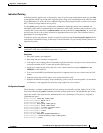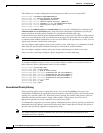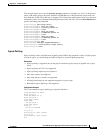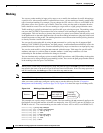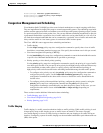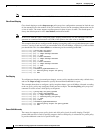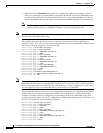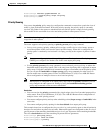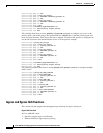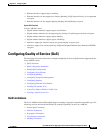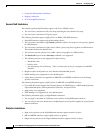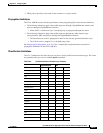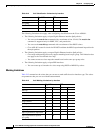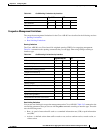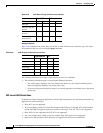
24-23
Cisco ASR 901 Series Aggregation Services Router Software Configuration Guide
OL-23826-09
Chapter 24 Configuring QoS
Understanding QoS
Router(config)# interface gigabitethernet 0/1
Router(config-if)# service-policy output out-policy
Router(config-if)# exit
Priority Queuing
You can use the priority policy-map class configuration command to ensure that a particular class of
traffic is given preferential treatment. With strict priority queuing, the priority queue is constantly
serviced. All packets in the queue are scheduled and sent until the queue is empty. Priority queuing
allows traffic for the associated class to be sent before packets in other queues are sent.
Caution Be careful when using the priority command. Excessive use of strict priority queuing might cause
congestion in other queues.
The router supports strict priority queuing or priority percent policy-map command.
• Strict priority queuing (priority without police) assigns a traffic class to a low-latency queue to
ensure that packets in this class have the lowest possible latency. When this is configured, the
priority queue is continually serviced until it is empty, possibly at the expense of packets in other
queues.
Note You cannot configure priority without policing for a traffic class when traffic shaping or
CBWFQ are configured for another class in the same output policy map.
• Use the priority percent policy-map command, or unconditional priority policing, to reduce the
bandwidth used by the priority queue. This is the only form of policing that is supported in output
policy maps. Using this combination of commands configures a maximum rate on the priority queue,
and you can use the bandwidth and shape average policy-map commands for other classes to
allocate traffic rates on other queues. From Cisco IOS Release 15.3(2)S, Cisco ASR 901 Router
allows configuration of multiple classes to serve based on priority.
Note When priority is configured in an output policy map without the priority command, you can
only configure the other queues for sharing by using the bandwidth remaining percent
policy-map command to allocate excess bandwidth.
Restrictions
• You can associate the priority command with a single unique class for all attached output polices
on the router. From Cisco IOS Release 15.3(2)S, Cisco ASR 901 Router allows configuration of
multiple classes with “priority percent.”
• You cannot configure priority and any other scheduling action (shape average or bandwidth) in the
same class.
• You cannot configure priority queuing for the class-default of an output policy map.
This example shows how to configure the class out-class1 as a strict priority queue so that all packets in
that class are sent before any other class of traffic. Other traffic queues are configured so that out-class-2
gets 50 percent of the remaining bandwidth and out-class3 gets 20 percent of the remaining bandwidth.
The class class-default receives the remaining 30 percent with no guarantees.
Router(config)# policy-map policy1
Router(config-pmap)# class out-class1
Router(config-pmap-c)# priority



